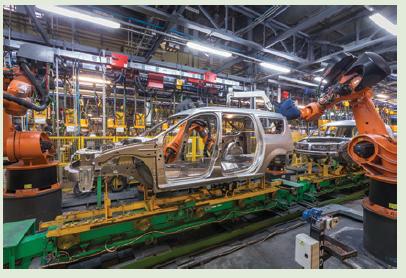As the manufacturing landscape shifts in response to new economic and social pressures, Australia is looking for
Question:
As the manufacturing landscape shifts in response to new economic and social pressures, Australia is looking for an answer to the question: what does the future look like for Australian manufacturing?
Irrespective of the wide-ranging views on what alternate futures for manufacturing might look like, Australian manufacturers need to be competitive in global markets and be highly productive and sustainable in their business operations. Manufacturing firms also need to capture the opportunities offered by Australia’s comparative advantage in natural resources in minerals and agriculture, as well as emerging markets for products and services that support more sustainable living in transport, construction, energy, health and wellbeing.
Over the next decade, success factors that will influence the competitiveness of Australian manufacturing firms will include the need for faster discovery and development to respond more quickly to dynamic markets, advanced design to create much more competitive and sustainable products, improved collaboration across our innovation system to maximise the exchange and transfer of knowledge, an increase in our ability to leverage our national broadband infrastructure, and encouraging a better understanding of supply chains.
Another key success factor will be our ability to develop, adapt, adopt and integrate the right enabling technologies that provide a competitive advantage for Australian manufacturing firms. There are a number of potential game changers in terms of enabling technologies and advanced capabilities. This includes additive manufacturing, assistive automation, advanced design and smart information systems. Globally, we have seen a major shift towards technology‐led manufacturing focused on large scale industrial automation. In countries such as Germany, production lines are increasingly dominated by automated processes and robotics. More recently, China has embarked on a large‐scale industrial automation program. However, we need to think about how such technological leaps work for Australia. We have our own unique manufacturing DNA, made up of tens of thousands of SMEs. This is very different to some other industrialised countries, where there are many more large‐scale manufacturing enterprises. Australian SMEs often find it difficult to embrace industrial automation because of cost and the risk of disruption to their production.
However, there may be other paths to large‐scale industrial automation. Simple repetitive tasks have largely been addressed by automation (robotics) in manufacturing environments. However, there are many complex tasks that still require human involvement; it may be these technologies that ‘assist’ (rather than replace) human processes that may become more prominent in Australia. The emerging field of assistive automation may play an important role in the future of Australian manufacturing. There is no doubt that Australian manufacturing will need to take its own path to innovation and maintaining its competitiveness. Global influences will play their part, but Australia’s unique manufacturing DNA, natural resource endowment and increasingly strong communication infrastructure will help shape a uniquely Australian manufacturing future.
QUESTION
What are the benefits of assistive automation as opposed to complete automation in the manufacturing environment?
Step by Step Answer:

Management
ISBN: 9780730329534
6th Asia Pacific Edition
Authors: Schermerhorn, John, Davidson, Paul, Factor, Aharon, Woods, Peter, Simon, Alan, McBarron, Ellen





